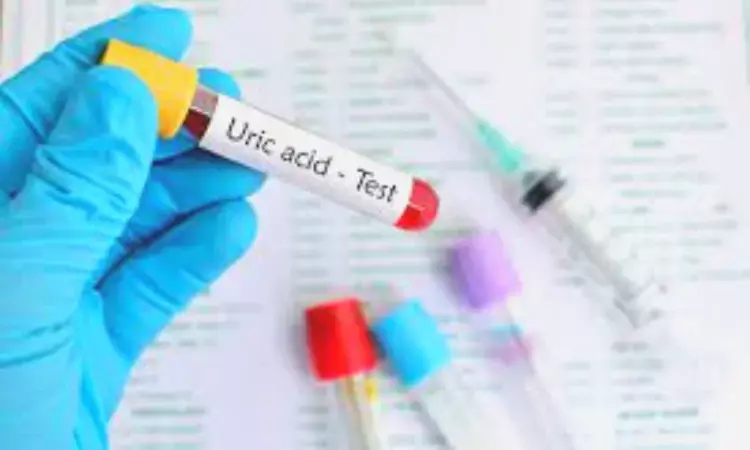- Home
- Medical news & Guidelines
- Anesthesiology
- Cardiology and CTVS
- Critical Care
- Dentistry
- Dermatology
- Diabetes and Endocrinology
- ENT
- Gastroenterology
- Medicine
- Nephrology
- Neurology
- Obstretics-Gynaecology
- Oncology
- Ophthalmology
- Orthopaedics
- Pediatrics-Neonatology
- Psychiatry
- Pulmonology
- Radiology
- Surgery
- Urology
- Laboratory Medicine
- Diet
- Nursing
- Paramedical
- Physiotherapy
- Health news
- Fact Check
- Bone Health Fact Check
- Brain Health Fact Check
- Cancer Related Fact Check
- Child Care Fact Check
- Dental and oral health fact check
- Diabetes and metabolic health fact check
- Diet and Nutrition Fact Check
- Eye and ENT Care Fact Check
- Fitness fact check
- Gut health fact check
- Heart health fact check
- Kidney health fact check
- Medical education fact check
- Men's health fact check
- Respiratory fact check
- Skin and hair care fact check
- Vaccine and Immunization fact check
- Women's health fact check
- AYUSH
- State News
- Andaman and Nicobar Islands
- Andhra Pradesh
- Arunachal Pradesh
- Assam
- Bihar
- Chandigarh
- Chattisgarh
- Dadra and Nagar Haveli
- Daman and Diu
- Delhi
- Goa
- Gujarat
- Haryana
- Himachal Pradesh
- Jammu & Kashmir
- Jharkhand
- Karnataka
- Kerala
- Ladakh
- Lakshadweep
- Madhya Pradesh
- Maharashtra
- Manipur
- Meghalaya
- Mizoram
- Nagaland
- Odisha
- Puducherry
- Punjab
- Rajasthan
- Sikkim
- Tamil Nadu
- Telangana
- Tripura
- Uttar Pradesh
- Uttrakhand
- West Bengal
- Medical Education
- Industry
Uric acid better marker of fatty liver disease than MetS in obese youth: Study

Italy: High serum uric acid (HUA) is a useful marker of fatty liver disease (FLD) in overweight/obese youths, a recent study has concluded. This is due to the greater ability of HUA to identify those at increased risk of the disease compared to metabolic syndrome (MetS). The study appears in Diabetes/Metabolism Research and Reviews.
The study was conducted by Melania Manco, Children's Hospital Bambino Gesù, IRCCS, Rome, Italy, and colleagues with the objective to compare the association of high serum uric acid or metabolic syndrome with fatty liver disease in youths with overweight/obesity (OW/OB).
For this purpose, the researchers conducted a cross-sectional study of anthropometrics, biochemical variables, and liver ultrasound of 3104 patients with OW/OB aged 5-17 years. MetS were defined by ≥3 criteria 1) high waist circumference; 2) high triglycerides; 3) low high-density lipoproteins; 4) fasting glucose ≥100 mg/dL; 5) blood pressure ≥95th percentile in children, and ≥130/80 mmHg in adolescents. HUA was defined as serum UA value ≥ 75th percentile adjusted for sex. Echography was determined using FLD.
Based on the study, the researchers reported the following findings:
- The sample was stratified into four categories: 1) no HUA, no MetS (reference category); 2) MetS; 3) HUA; 4) HUA and MetS (HUA+MetS).
- The prevalence of FLD increased across the four categories from 29.9%, 44.0%, 52.2% to 67.1%, respectively.
- The ORs for the categorical variables were 1.33 for MetS, 3.19 for HUA, and 3.72 for HUA+MetS, vs. the reference category regardless of the body mass index.
"Given its greater ability to identify those at increased risk of the disease compared to MetS, HUA represents a useful marker of FLD in youths with OW/OB," the researchers wrote. "There is a need to investigate the ability of both to predict incident FLD in a longitudinal study."
Reference:
Di Bonito, Procolo, et al. "Uric Acid Versus Metabolic Syndrome as Markers of Fatty Liver Disease in Young People With Overweight/obesity." Diabetes/metabolism Research and Reviews, 2022, pp. e3559.
Dr Kamal Kant Kohli-MBBS, DTCD- a chest specialist with more than 30 years of practice and a flair for writing clinical articles, Dr Kamal Kant Kohli joined Medical Dialogues as a Chief Editor of Medical News. Besides writing articles, as an editor, he proofreads and verifies all the medical content published on Medical Dialogues including those coming from journals, studies,medical conferences,guidelines etc. Email: drkohli@medicaldialogues.in. Contact no. 011-43720751


